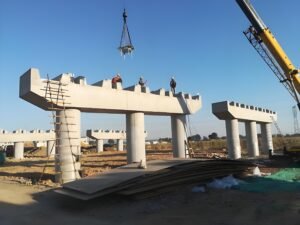A bridge bearing is a critical component that connects the bridge deck to the supporting piers. Its primary function is to allow controlled movement, thereby reducing stress on the structure. This movement can be caused by factors such as temperature fluctuations, seismic activity, or other external forces.
Bridge Bearings: The Foundation of Bridge Stability
A bridge bearing is a crucial component that connects the bridge deck to the supporting piers. Its primary function is to allow controlled movement, thereby reducing stress on the structure. This movement can be caused by factors such as temperature fluctuations, seismic activity, or other external forces.
The type of bridge bearing used depends on various factors, including the span of the bridge. The simplest form of bearing consists of two plates stacked on top of each other. However, modern bridges often employ more advanced designs. Elastomeric bearings, made from rubber-like materials, are a common choice. These bearings offer flexibility and can accommodate both vertical and horizontal movement.
Mechanical bearings provide a different approach to supporting bridge structures. Pinned bearings allow rotation in one direction, while fixed bearings permit only rotational movement. Within the category of pinned bearings, rocker and roller bearings are popular options, each offering specific advantages based on the bridge’s design and loading conditions.
Features of bridge bearings
- Load-bearing capacity: Bearings must be able to withstand the weight of the bridge deck and any additional loads, such as traffic or environmental forces. The bearing’s design and materials determine its load-bearing capacity.
2. Durabilité: Bridge bearings are subjected to various environmental factors, including moisture, temperature extremes, and chemical exposure. They must be durable and resistant to degradation to ensure long-term performance.
3. Exigences d'entretien : Some bearings require regular maintenance, such as lubrication or inspection, to maintain their functionality. Others may have lower maintenance needs. The specific requirements depend on the bearing type and the bridge’s operating conditions.
Conclusion:
Bridge bearings are essential components that play a critical role in ensuring the structural integrity and longevity of bridges. They provide support, accommodate movement, and distribute loads, contributing to the overall safety and performance of these vital infrastructure elements.



